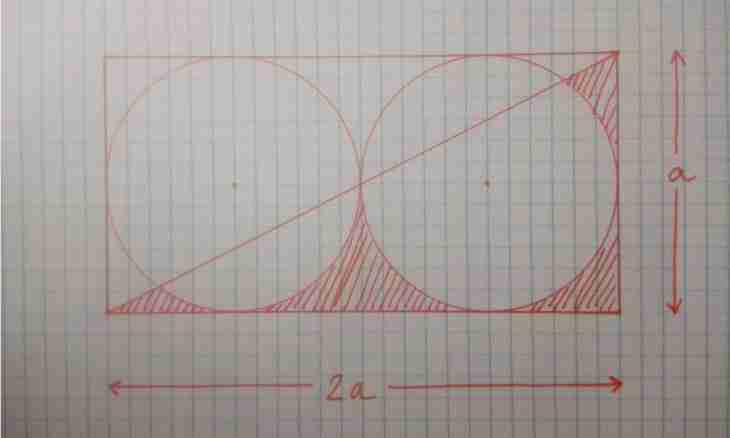Let two crossed straight lines set by the equations be given. It is required to find the equation of a straight line which, passing through a point of intersection of these two straight lines, would halve precisely a corner between them, that is would be a bisector.
Instruction
1. Let's assume that straight lines are set by the initial equations. Then A1x + B1y + C1 = 0 and A2x + B2y + C2 = 0. At this A1/B1 ≠ A2/B2, differently straight lines are parallel and the task does not make sense.
2. As it is obvious that two crossed straight lines form among themselves four in pairs equal corners, there have to be exactly two straight lines meeting a statement of the problem.
3. These straight lines will be perpendicular each other. The proof of this statement is rather simple. The sum of four corners formed by the crossed straight lines will be always equal 360 °. As corners are in pairs equal, this sum can be presented in the form: 2a + 2b = 360 ° or that is obvious, a + to b = 180 °. As the first of required bisectors halves a corner, and the second — b corner, the corner between bisectors is always equal to a/2 + to b/2 = (a + b)/2 = 90 °.
4. The bisector, by definition, halves a corner between straight lines, so, for any point lying on it, distances to both straight lines will be identical.
5. If the straight line is set by the initial equation, then distance from it to some point (x0, y0) which is not lying on this straight line: d = | (Ax0 + By0 + C) / (√ (A^2 + B^2)) |. Therefore, for any point lying on a required bisector: | (A1*x + B1*y + C1) / √ (A1^2 + B1^2) | = | (A2*x + B2*y + C2) / √ (A2^2 + B2^2) |.
6. Because in both parts of equality there are signs of the module, it describes both required straight lines at once. To turn it into the equation only of one of bisectors, it is necessary to open the module or with the sign +, or with the sign-. Thus, equation of the first bisector: (A1*x + B1*y + C1) / √ (A1^2 + B1^2) = (A2*x + B2*y + C2) / √ (A2^2 + B2^2). Equation of the second bisector: (A1*x + B1*y + C1) / √ (A1^2 + B1^2) = - (A2*x + B2*y + C2) / √ (A2^2 + B2^2).
7. For example, let the straight lines determined by the initial equations are set: 2x + y-1 = 0, x + 4y = 0. The equation of their first bisector turns out from equality: (2x + y-1) / √ (2^2 + 1^2) = (x + 4y + 0) / √ (1^2 + 4^2), that is (2x + y - 1) / √5 = (x + 4y) / √15. Removing the brackets and transferring the equation to a canonical form: (2 * √ 3 - 1) *x + (√3 - 4) *y - √3 = 0.

